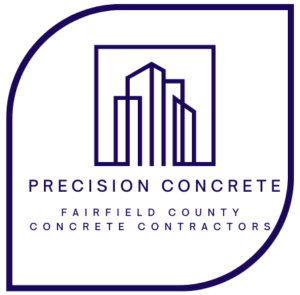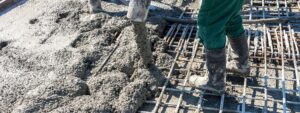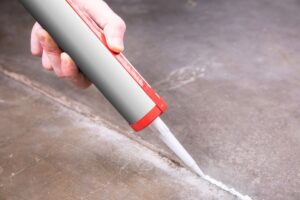If you’ve ever worked with concrete—whether pouring a new driveway, laying a foundation, or building a backyard patio—you have probably asked yourself: how long does it take concrete to cure? Or maybe you have found yourself wondering how long does it take for concrete to set before you can safely walk or build on it.
These are fair questions, especially when you’re eager to use the surface or move forward with the next phase of your project. But the truth is, curing concrete isn’t just about giving it a day or two to “dry.” It is a longer, more precise process that plays a critical role in the strength and longevity of your structure.
Understanding how long it takes concrete to cure helps prevent costly mistakes like premature cracking, surface damage, or structural weakness. Whether you’re curious about the time to cure for a cement driveway or asking how long it takes to cure cement for a slab foundation, the answers depend on several key factors, including weather, mix type, and the thickness of your pour. And if you’re a homeowner or contractor trying to plan, having a realistic timeline for curing can keep your entire schedule on track.
While it might look ready after a day or two, concrete gains strength over weeks. Initial setting and complete curing are two very different stages. Knowing how long does it take for concrete to set is helpful for timing finishing work, while knowing the time to cure concrete is critical for long-term durability. Rushing the process can lead to problems that show up months—or even years—down the line.
This guide breaks down the complete curing timeline, what affects it, and how to care for concrete during each phase. Whether you are a DIYer or a seasoned pro, understanding how long it takes to cure cement before putting it to full use is essential before your next pour.
What Is Concrete Curing and Why Does It Matter?
Curing is one of the most important—but often misunderstood—parts of working with concrete. It is not just about waiting for it to dry; it is about maintaining the right conditions over time to help the concrete reach its full strength. Understanding how long it takes concrete to cure is key to preventing premature cracking or structural weakness.
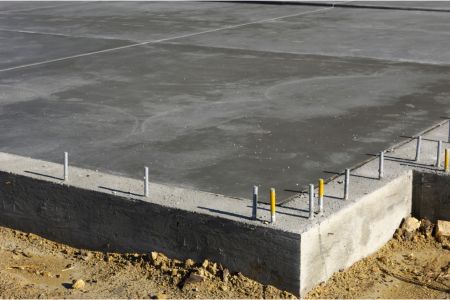
Proper curing improves durability, prevents cracks, and ensures your slab, footing, or wall lasts for decades. If curing is rushed or skipped, the finished product may look fine initially but fail prematurely under stress or exposure.
The Science Behind Concrete Curing
Concrete cures through a chemical process called hydration. When water is added to cement, it reacts with the cement particles to form bonds that gradually harden and strengthen the mix. This process continues for days or weeks, so curing isn’t just a one-day event. Knowing how long does it take to cure cement is essential, especially for large-scale or high-load projects.
The more extended hydration is allowed under the right conditions—typically with adequate moisture and controlled temperature—the stronger and more durable the concrete becomes. Ignoring the full-time to cure concrete can leave you with a surface that is brittle, weak, or prone to damage.
Difference Between Setting and Curing
Setting and curing are often confused, but they’re not the same. How long does it take for concrete to set? Usually, concrete begins to harden within a few hours, allowing it to support its weight and take shape. However, this early hardening is only the beginning. How long does it take concrete to cure fully? That process takes several days to weeks, depending on the mix, temperature, and moisture levels.
Curing is the long-term phase that ensures maximum strength and resilience. Just because concrete is hard to the touch does not mean it’s ready for use. Skipping or shortening the curing time can significantly reduce the lifespan and performance of your finished structure.
How Long Does It Take Concrete to Cure?
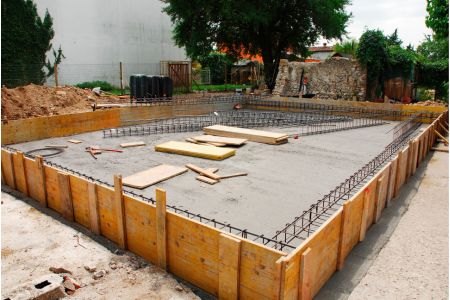
The answer can vary depending on the type of project, environmental conditions, and how the concrete is treated after it’s poured. Whether you’re working on a driveway, patio, or foundation, understanding the general timeline and what impacts it helps you plan more effectively and avoid premature use that could damage the surface.
Below, we will cover the standard time to cure concrete, how it differs based on your specific project, and when it’s safe to walk or drive on your newly poured surface.
General Timeline for Concrete Curing
Concrete typically reaches about 70% of its full strength within the first 7 days and continues to cure over 28 days. While it may appear dry and solid after 24 to 48 hours, that is only how long it takes for concrete to set—not cure. How long does it take concrete to cure fully? Roughly 28 days under normal conditions.
During this time, moisture and temperature must be carefully managed to support the hydration process that strengthens the material. If you are wondering how long it takes to cure cement for optimal results, the 28-day guideline remains the industry standard for most applications.
Variations in Cure Time Based on Project Type
Not all concrete projects cure at the same rate. A large slab foundation may require more time and stricter moisture control than a smaller sidewalk or patio. High-performance or fast-setting mixes may develop strength more quickly.
However, they still benefit from a full time to cure concrete to maximize durability. Decorative finishes, stamped concrete, and structural components have unique requirements that can extend or shorten the curing time depending on thickness, weather, and exposure.
How Long Before You Can Walk or Drive on New Concrete?
Depending on the temperature and mix used, you can typically walk on freshly poured concrete after 24 to 48 hours. However, this does not mean it’s fully cured. It is usually best to wait at least 7 days for driveways before parking or driving on the surface.
Heavier loads, like RVs or delivery trucks, may require the full 28-day cure time. Using the concrete too early—especially under heavy weight—can lead to surface damage, cracking, or reduced lifespan.
How Long Does It Take for Concrete to Set?
You can typically walk on freshly poured concrete after 24 to 48 hours, depending on the temperature and mix used—this marks roughly how long it takes for concrete to set. But don’t mistake this for being fully cured. It is recommended to give at least 7 days for driveways before parking or driving on the surface.
Heavier vehicles like RVs or delivery trucks may require the full 28-day time to cure concrete. Using the concrete too early—especially under heavy loads—can cause cracks, surface flaking, or long-term durability issues. When planning your project’s final stages, consider how long it takes to cure cement.
Factors That Affect Time to Cure Concrete
While the standard curing timeline is around 28 days, several factors can speed up or slow down the process. Environmental conditions, mix composition, and additives all affect how quickly concrete gains strength. Understanding these variables helps ensure your project is planned and protected correctly during the curing phase.
Weather and Temperature Conditions
Hot, dry weather can cause concrete to cure too quickly, leading to surface cracks or weaker final strength. Cold or damp conditions slow the curing process, increasing the time needed to reach proper strength. Ideally, concrete cures best between 50°F and 75°F, with controlled moisture throughout the process.
Concrete Mix and Additives
Different concrete mixes and additives impact how fast curing occurs. Fast-setting mixes reduce cure time but still need moisture control. Additives like accelerators speed up hydration, while retarders slow it down—useful in hot climates. High-performance or specialty mixes may require modified curing timelines based on their specific composition.
How to Speed Up Concrete Curing Without Compromising Strength
Speeding up concrete curing may be necessary for time-sensitive projects, but it must be done carefully to avoid weakening the final result. Balancing efficiency with proven techniques supporting proper hydration and strength development is key. Below are two safe and effective methods to help accelerate curing without cutting corners.
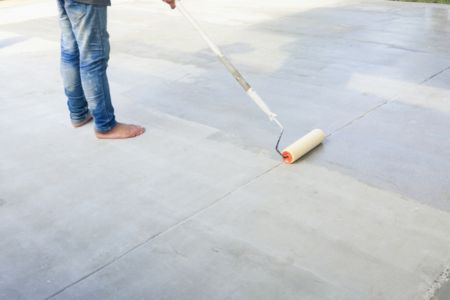
Using Accelerators and Proper Curing Methods
Accelerators can be added to the concrete mix to speed up the process, especially in colder weather. However, they should be used in controlled amounts to avoid shrinkage or surface defects. Alongside accelerators, maintaining optimal moisture and temperature through proper curing methods—like using curing blankets or water misting—helps achieve faster results safely.
The Role of Sealing in Faster Curing
Applying a curing compound or concrete sealer shortly after finishing helps retain moisture, which is critical for strength gain. Some sealers also allow for earlier foot traffic without compromising the surface. While sealing does not drastically reduce total cure time, it protects against rapid drying that can weaken the concrete prematurely.
Common Myths About Concrete Curing
There’s no shortage of misinformation when it comes to concrete curing. These myths often lead to poor practices, compromising strength, durability, and longevity. Knowing the truth behind these common misconceptions helps homeowners and contractors avoid mistakes that can cost time and money. Here are a few widespread myths and the facts behind them.
“Concrete Dries in 24 Hours” – Fact or Fiction?
Fiction. Concrete may appear dry and feel stiff after 24 hours, but that is just the surface. It has not developed enough internal strength for regular use. Complete curing takes up to 28 days. Using it too soon—especially for driving or heavy loads—can cause cracking or long-term structural weakness.
“You Don’t Need to Keep Concrete Moist After Pouring”
Incorrect. Keeping concrete moist after pouring is critical for proper curing. Hydration drives strength development, and without moisture, the process stalls. Covering with plastic sheeting, misting, or applying curing compounds helps retain moisture, especially during the first few days after pouring. Drying out too soon weakens the final product.
“You Can Skip Curing in Warm Weather”
Wrong. Warm weather accelerates evaporation, which can dry out the surface too fast and lead to cracking; even in hot conditions, concrete needs controlled moisture to cure properly. Curing in warm climates may require extra attention—like using curing blankets or frequent misting—to maintain strength and prevent damage.
Final Thoughts on Professional Concrete Application and Curing
Curing concrete correctly takes time, but it’s one of the most critical steps in any concrete project. Whether you’re pouring a patio, driveway, or foundation, understanding how long it takes concrete to cure—and why it matters—can make the difference between a firm, long-lasting surface and one that cracks or fails prematurely.
From the initial setting to the complete 28-day cure, following proper curing practices ensures durability, strength, and fewer headaches down the road. Be mindful of factors like temperature, moisture, and mix type, and don’t fall for shortcuts or common myths. A little patience now means years of reliable performance.
Need expert help with your next concrete project? Contact Precision Concrete Stratford – Fairfield County Concrete Contractors for reliable, professional results. We bring experience, precision, and care to every job—start your project right with our trusted concrete experts!
